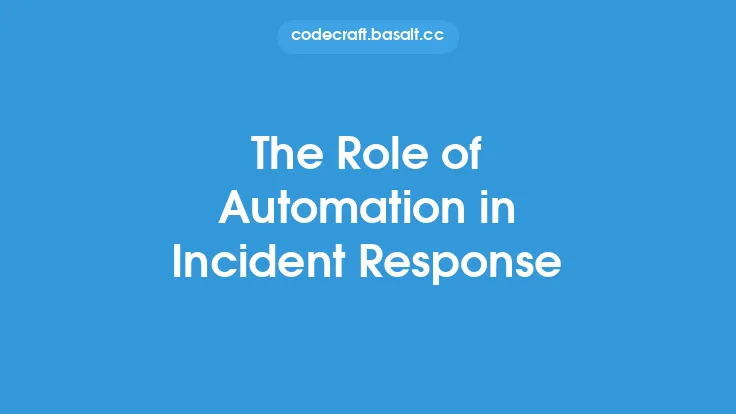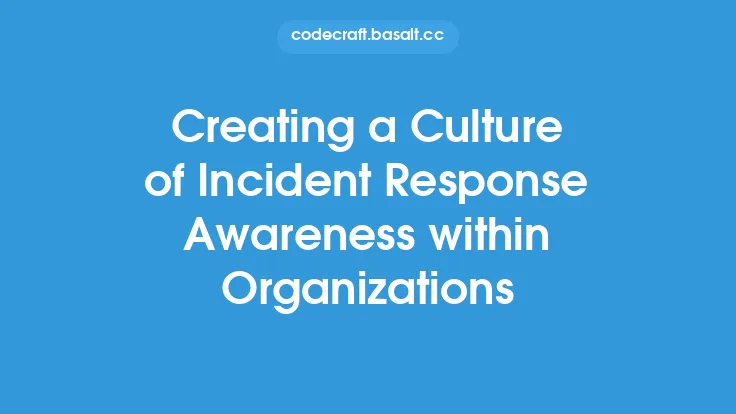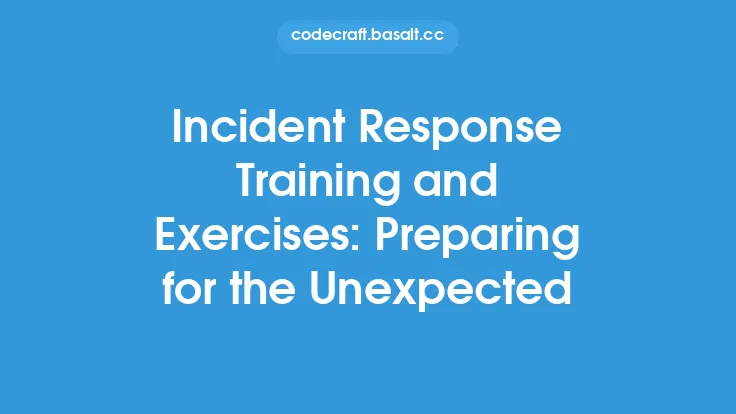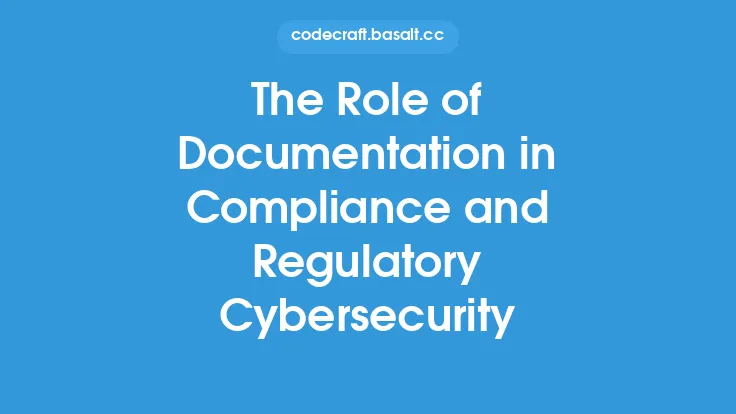Effective communication is the backbone of any successful incident response strategy. When a security incident occurs, it is crucial that all stakeholders, including the incident response team, management, and external parties, are informed and aligned to ensure a swift and effective response. In this article, we will delve into the importance of communication in incident response, exploring its role in minimizing damage, reducing downtime, and promoting a culture of transparency and collaboration.
Introduction to Communication in Incident Response
Communication is a critical component of incident response, as it enables the incident response team to quickly and effectively respond to security incidents. Clear and concise communication helps to ensure that all stakeholders are aware of the incident, its impact, and the steps being taken to mitigate and resolve it. This, in turn, helps to minimize damage, reduce downtime, and prevent further incidents from occurring. Effective communication also promotes a culture of transparency and collaboration, which is essential for building trust and ensuring that all stakeholders are working together to achieve a common goal.
The Role of Communication in Incident Response
Communication plays a vital role in incident response, serving as the foundation for all response activities. It enables the incident response team to quickly and effectively respond to security incidents, minimizing damage and reducing downtime. Communication also helps to ensure that all stakeholders are informed and aligned, promoting a culture of transparency and collaboration. The role of communication in incident response can be broken down into several key areas, including:
- Initial Notification: Clear and concise communication is essential for initial notification of a security incident. This includes notification of the incident response team, management, and other stakeholders.
- Incident Assessment: Communication is critical during the incident assessment phase, as it enables the incident response team to quickly and effectively assess the incident and determine its impact.
- Mitigation and Resolution: Effective communication is essential for mitigation and resolution activities, as it enables the incident response team to quickly and effectively implement measures to mitigate and resolve the incident.
- Stakeholder Management: Communication is critical for stakeholder management, as it enables the incident response team to keep all stakeholders informed and aligned throughout the response process.
Communication Channels and Protocols
Establishing clear communication channels and protocols is essential for effective incident response. This includes:
- Incident Response Team Communication: The incident response team should have a clear communication plan in place, including designated communication channels and protocols for initial notification, incident assessment, mitigation, and resolution.
- Stakeholder Communication: The incident response team should also have a clear communication plan in place for stakeholder communication, including designated communication channels and protocols for keeping stakeholders informed and aligned throughout the response process.
- External Communication: The incident response team should also have a clear communication plan in place for external communication, including designated communication channels and protocols for communicating with external parties, such as law enforcement, regulatory bodies, and the media.
Technical Communication Considerations
From a technical perspective, communication is critical for incident response, as it enables the incident response team to quickly and effectively respond to security incidents. Technical communication considerations include:
- Network Communication: Network communication is critical for incident response, as it enables the incident response team to quickly and effectively communicate with systems and devices on the network.
- Encryption: Encryption is essential for protecting communication during incident response, as it ensures that sensitive information is not intercepted or compromised.
- Authentication: Authentication is critical for incident response, as it ensures that only authorized personnel have access to sensitive information and systems.
Best Practices for Communication in Incident Response
To ensure effective communication in incident response, the following best practices should be followed:
- Establish Clear Communication Channels and Protocols: Clear communication channels and protocols should be established for incident response, including designated communication channels and protocols for initial notification, incident assessment, mitigation, and resolution.
- Use Standardized Communication Templates: Standardized communication templates should be used for incident response, including templates for initial notification, incident assessment, and stakeholder communication.
- Conduct Regular Communication Drills and Exercises: Regular communication drills and exercises should be conducted to ensure that the incident response team is prepared to respond to security incidents and that communication channels and protocols are effective.
- Monitor and Evaluate Communication Effectiveness: Communication effectiveness should be monitored and evaluated on a regular basis, including during incident response activities, to ensure that communication channels and protocols are effective and that areas for improvement are identified and addressed.
Conclusion
Effective communication is critical for incident response, as it enables the incident response team to quickly and effectively respond to security incidents, minimizing damage and reducing downtime. By establishing clear communication channels and protocols, using standardized communication templates, conducting regular communication drills and exercises, and monitoring and evaluating communication effectiveness, organizations can ensure that communication is effective and that incident response activities are successful.





